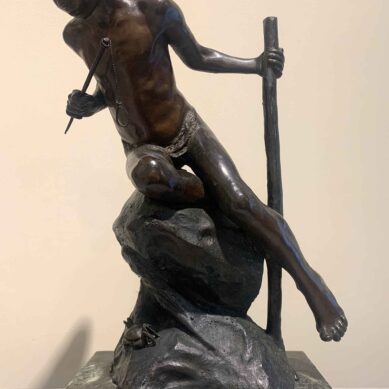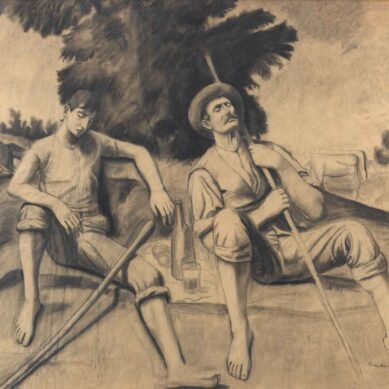You searched
Painter
Amilcare Casati
Are you interested in the sales or the purchase of his artworks?
We buy works of this artist
and of other painters and sculptors from the 16th century to the first half of the 20th century
The Berardi gallery offers a free and without obligation service for evaluation of ancient and modern art . To find your way in the art market, very complex and full of nuances, it is better to rely on a professional consultant who can answer fast and concretely to your needs. The clarity of the answers will resolve effectively the need to estimate or sell an asset.
Contact us immediately without commitment
Answers also in 24 hours:
Amilcare Casati
Amilcare Casati
Amilcare Casati was born in Forlì in 1895 but very little is known about his private life and production.
Between Verism and Divisionism
His beginnings, however, were within the Divisionist movement as can be understood by observing the work La veggente (The Seer) painted in 1919. Both in terms of subject matter and pictorial language, it is close to Divisionist poetics. In fact, he uses a fragmented touch, applied in imperceptible horizontal strokes that recreate small flashes of light that illuminate the painting’s dark background.
The chromaticism given by the juxtaposition of complementary colours further illuminates the canvas and also evokes the poetics of the Secession and the choices of the masters Galileo Chini, Arturo Noci and Enrico Lionne. The selection of mystical and orientalising subject matter is another reason that brings his painting closer to that of the artists of the Roman Secession. The fascination with the exotic and the Orient returns in Oriental Man, which, however, differs in pictorial technique from The Seer. In fact, in this painting, the artist adopts a verista language more connected to the poetics of the late 19th century, with a more mellow and full-bodied brushstroke, not spread out in small strands, but material. Even the man’s face is rendered with realistic features, identified by a skilful use of light and chiaroscuro.
A highly personal interpretation of the stylistic features of Magic Realism
The artist certainly specialised in portraiture, but from the 1920s onwards there is a further change in his artistic language. The portraits of Artuto Orsini and Giovanni Pizzi testify to a rapprochement to the stylistic features of the Return to Order and above all of Magic Realism in a very personal sense. The two figures were presidents of the ICP, the former from 1914 to 1917 and the latter from 1918 to 1923.
Today the works are in the collection of the Fondazione IRCCS Ca’ Granda Ospedale Maggiore Policlinico in Milan. The artist’s interest in a psychological investigation of the subjects continues, and even in the rarefied atmosphere he manages to capture the physiognomic features of the figures. The palette lightens, becoming clear and bright, and a crystalline light suspends time and space.
The colours no longer approach each other by complementary chromatic values, but are soft and of pastel nuances, approached without creating jarring contrasts. The painter exhibited his Portrait of Maestro Zandonai at the Permanente in Milan in 1938, immortalising the famous composer and conductor in one of his paintings; and he also painted the Portrait of Ines Lidelba, a theatre actress from his homeland, now in the collection of the Museo Romagnolo del Teatro in Forlì. He died in his home town in 1961.
Emanuela Di Vivona







